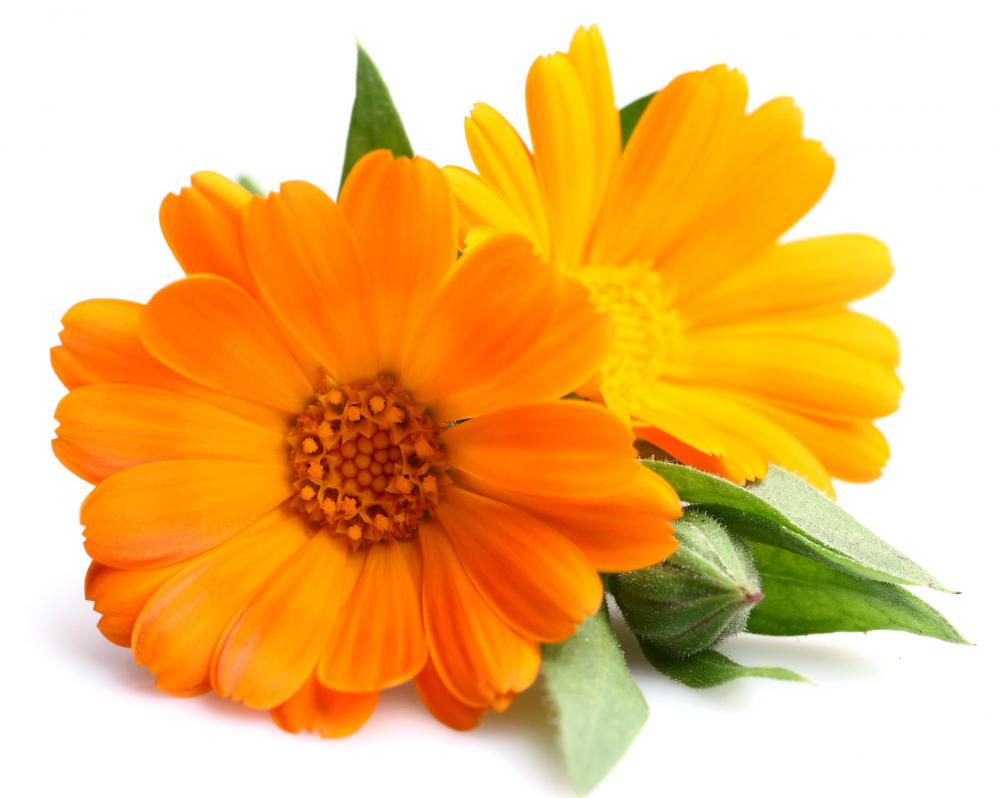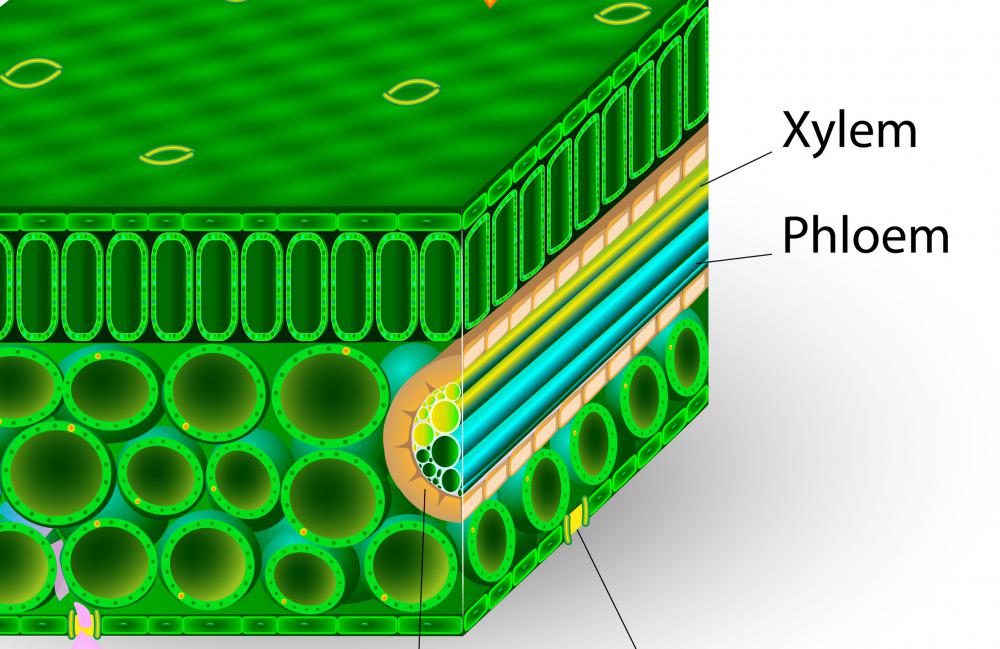At AllThingsNature, we're committed to delivering accurate, trustworthy information. Our expert-authored content is rigorously fact-checked and sourced from credible authorities. Discover how we uphold the highest standards in providing you with reliable knowledge.
What is a Compositae?
Compositae — also known as Asteraceae — is a family of plants characterized by its multiple flowering heads, intricate root and stem systems, and reproductive methods. The term comes from the Latin word compositus, which means "made up of parts." Also referred to as the sunflower, daisy, or aster family due to various well-known plant species that make up the Compositae group, this plant family includes more than 20,000 species and is found in nearly every part of the world. Popular flowers in the Compositae family range from bright yellow sunflowers and vivid pink dahlias to pesky weeds like thistle and ragweed.
Originally recognized by the Greeks, it was not until the 1800s that clear relationships were drawn between these plants. Henri Cassini first outlined these relationships, and others later tweaked his work to reflect the modern day definition of the Compositae group. It is the largest known family of vascular plants. The large group is broken down into several different types and styles.

These plants have numerous and varied uses. The sunflower, for example, produces edible seeds that are often shelled and salted before eating. Other plants are used in teas and as sweeteners for food or drink. Several are considered to have medicinal uses. The more brightly colored flowers, including zinnias and marigolds, are prized among gardeners and often found in outdoor flower beds and window boxes.

Though it is known primarily for its flowers, shrubs and trees are also part of the Compositae family. In the flowering plants, vividly colored thin petals come in groups of five or more and spread around the center of the flower. Most noticeable are the rigid, upright green stems and the florets branching off. Florets, the individual flower heads of a plant, are numerous in this type of flower. The thin main stem branches into a number of even smaller stems near the top, each with a flower attached.

During the spring, the flowers appear in full bloom. Often they grow in groups, and rolling fields of daises are not an uncommon sight. The center of the plant forms hundreds of seeds, which are carried away by the wind to spread out and produce new plants. After the warm months pass and cool weather settles in, the plants die off. During the growing season, the plants can prove quite tricky to kill and many, such as the daisy, are considered weeds by gardeners and homeowners.
Frequently Asked Questions
What is a Compositae?
A Compositae, also known as Asteraceae, is one of the largest families of flowering plants, encompassing over 23,000 species. It includes a diverse range of plants from small weeds to large shrubs, characterized by composite flowers that are actually clusters of many tiny flowers, giving the appearance of a single bloom. This family includes well-known plants like daisies, sunflowers, and chrysanthemums.
How do Compositae flowers differ from other flowers?
Compositae flowers are unique because what appears to be a single flower is actually a collection of smaller florets. These florets are arranged in a structure called a head or capitulum. The outer florets often resemble petals, while the inner ones are typically disc florets that may contain reproductive organs. This arrangement can greatly enhance pollination efficiency.
Are Compositae plants important for the ecosystem?
Yes, Compositae plants play a crucial role in ecosystems. They are a significant source of food for pollinators like bees, butterflies, and birds. According to the USDA, plants in the Asteraceae family are used extensively in habitat restoration projects because they are often pioneer species that can thrive in disturbed soils and help stabilize ecosystems.
Can Compositae plants be used for medicinal purposes?
Many Compositae plants have been used in traditional medicine for centuries. For example, Echinacea, a member of this family, is known for its immune-boosting properties. Chamomile, another Compositae, is widely used for its calming and anti-inflammatory effects. Always consult with a healthcare provider before using any plant medicinally.
What are some common examples of Compositae plants?
Common examples of Compositae plants include the sunflower (Helianthus annuus), which is recognized for its large, sunny blooms and seeds that produce oil and snacks; the daisy (Bellis perennis), known for its simple yet charming white and yellow flowers; and the artichoke (Cynara scolymus), valued both as a food source and for its striking appearance.
How can I identify a Compositae plant in the wild?
To identify a Compositae plant, look for the distinctive flower structure—a central disc made up of small, tubular florets surrounded by a ring of ray florets that may look like petals. Additionally, their leaves can be arranged alternately, oppositely, or in rosettes. Many also have milky or resinous sap when their stems are broken.
AS FEATURED ON:
AS FEATURED ON:













Discussion Comments
My neighbors might consider them weeds, but I keep my yard full of daisies and brown-eyed susans. I was delighted when I moved in to find my yard covered by these flowers in springtime and summer. They are so thick that they eliminate a lot of the grass.
I don’t mow my yard, because I don’t want to cut these beautiful, happy flowers down. They are like rays of sunshine. Even cloudy days are made bright by my yard full of yellow and white.
My neighbors tease me about my refusal to mow my yard. They jokingly threaten to cut it when I’m not home, but I know that they really secretly enjoy looking out their window to my field of flowers.
Marigolds are a very useful Compositae member. They can be grown in vegetable gardens to deter pests. I have grown them around pumpkins.
I had a major problem with squash beetles in my miniature pumpkin garden. I was growing the pumpkins to use as decorations, so the beetles were really messing up my plan by chewing on them. They also chewed on the vines, which can destroy the plant.
I heard that marigolds could successfully repel squash beetles. I planted several at intervals throughout my pumpkin garden, and the beetles stayed away.
Marigolds have a smell when disturbed. It resembles that of a tomato plant. Maybe this odor drives the beetles away.
Zinnias to me are the easiest member of the Asteraceae family to grow. Anyone who can water a seed can get zinnias started. Once established, they can withstand droughts, storms, and high winds. My dog even likes to lay on the zinnias, and they continue to flourish.
Zinnias, if bent, will re-route themselves toward the sun. I have some that my dog laid on that lie partially horizontal but have sent a flower stalk back upwards.
I try to water my zinnias every two weeks if there is no rainfall. They appear in May and bloom until killed by the first frost, generally in October.
My favorite member of the Compositae group is the gaillardia. It is also known as a miniature sunflower. The center is yellow and red, and the petals start out red at the base and turn yellow at the tips.
The petals have a satiny sheen and an almost waxy feel. Dozens of flowers grow on one plant, and it looks like a bush. Silvery green leaves cover the stems of each stalk.
The gaillardia blooms all summer, but the foliage stays green all year. Some of the plant will die back, but I have seen green leaves at the base of it even in the snow.
After a flower is spent, the center turns into a white puffball of seeds. These are scattered by the wind. Each flower makes dozens of seeds.
Post your comments